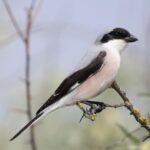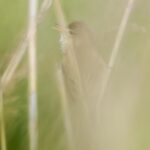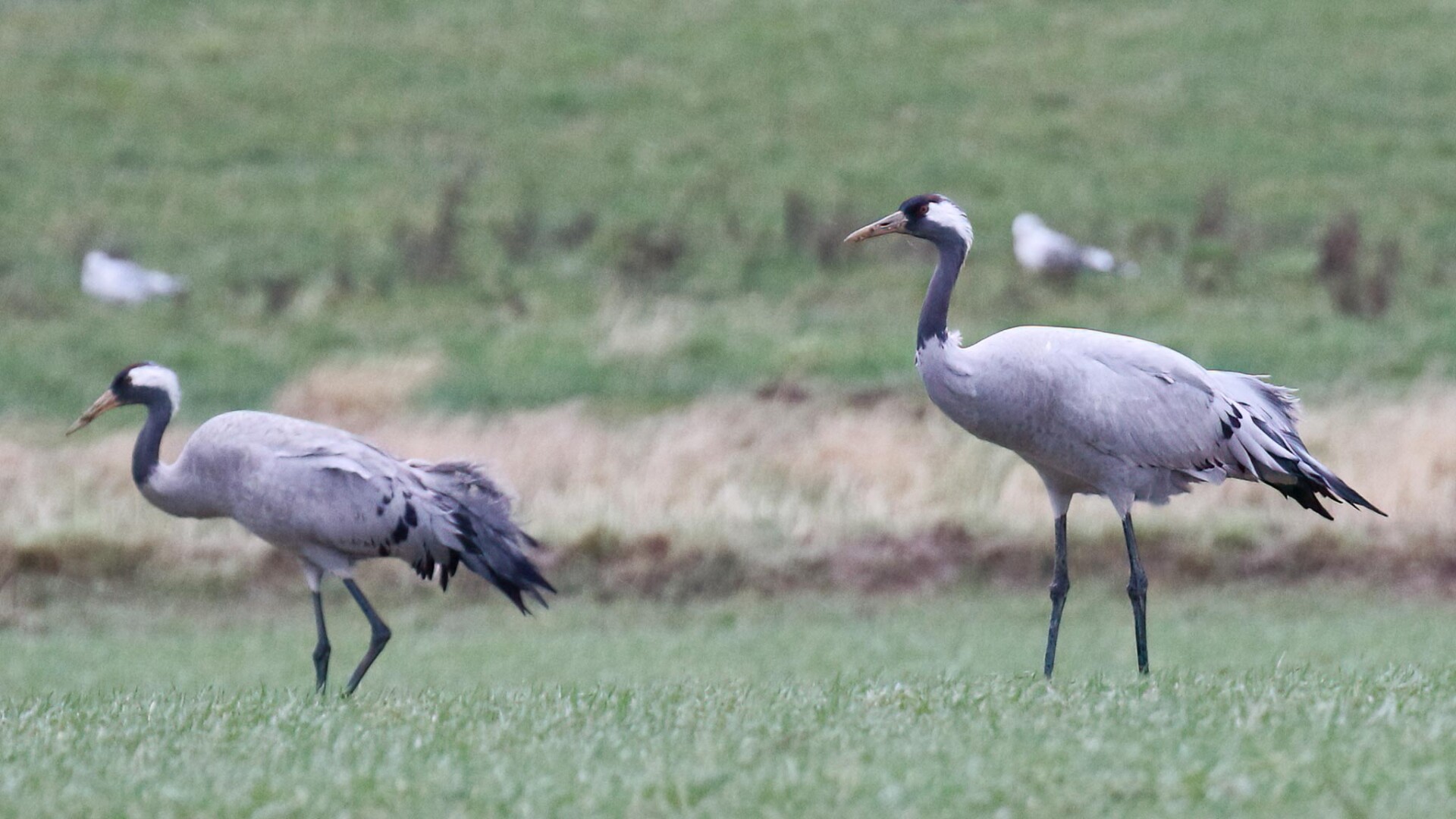Day 3 of a 4-day Spring Migration tour in Norfolk. It started bright and sunny, but the early mist which had burnt back and been hanging offshore started to drift back in during the morning and then hugged the coast during the day. There was a rather cool sea breeze which picked up during the afternoon. We spent the day on the North Norfolk coast again.
It was nice and sunny when we arrived at Burnham Overy Staithe. Several Skylarks were singing, a Whitethroat flitted across the road and a smart male Yellowhammer was perched in the sunshine on top of the hedge opposite.
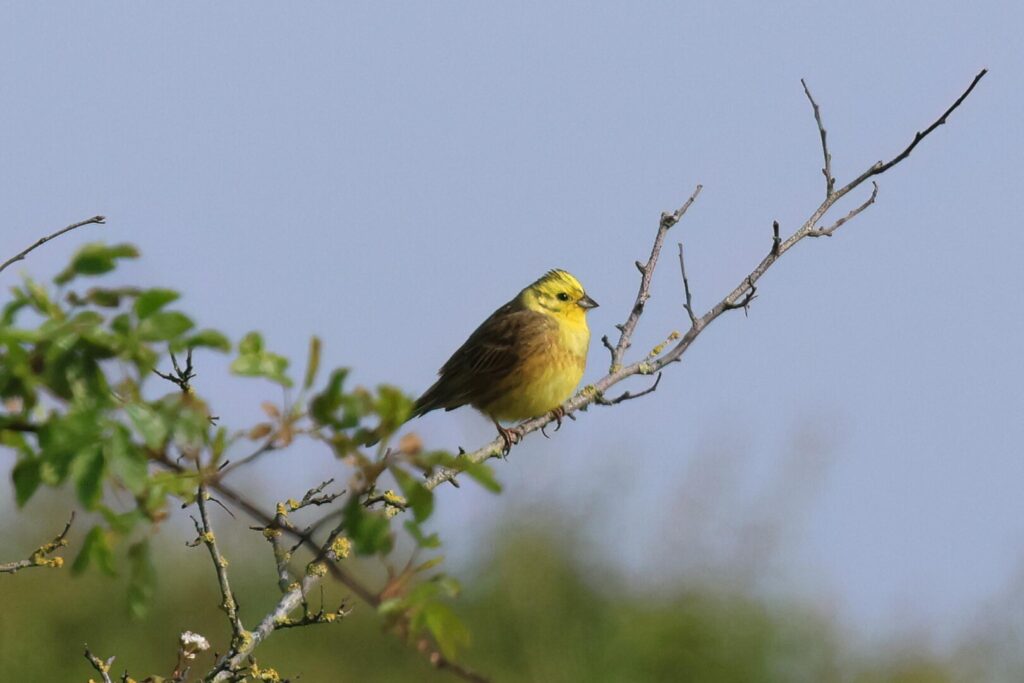
As we crossed the road, a Mediterranean Gull circled overhead, calling. From below, we could see the light through its translucent white wing tips. Looking at the photos later, we could see it was also colour-ringed. It looks to have been ringed in Belgium or the Netherlands – at the time of writing, we are still awaiting details back of where it has been since.
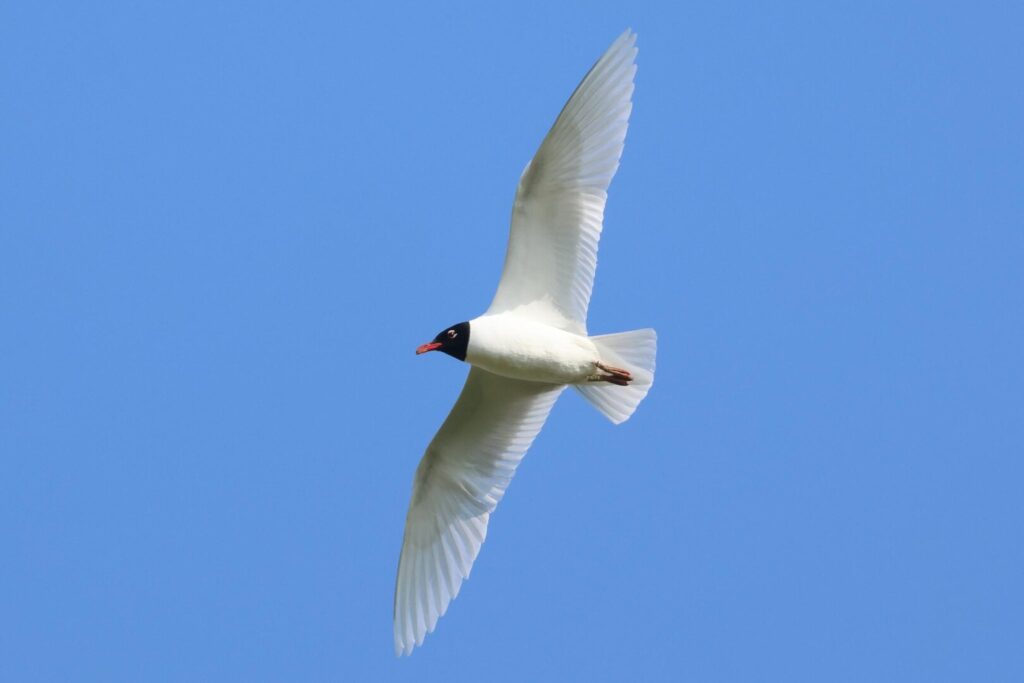
A couple of Chiffchaffs were singing in the hedge as we walked down along Whincover. There were Common Whitethroats singing too, beyond the stile and a Bullfinch piping from somewhere deep in the hedge. We couldn’t hear any Lesser Whitethroats though as we walked along but when we got to the gate one started up behind us. We turned to see it perched obligingly right in the top of the hawthorns.
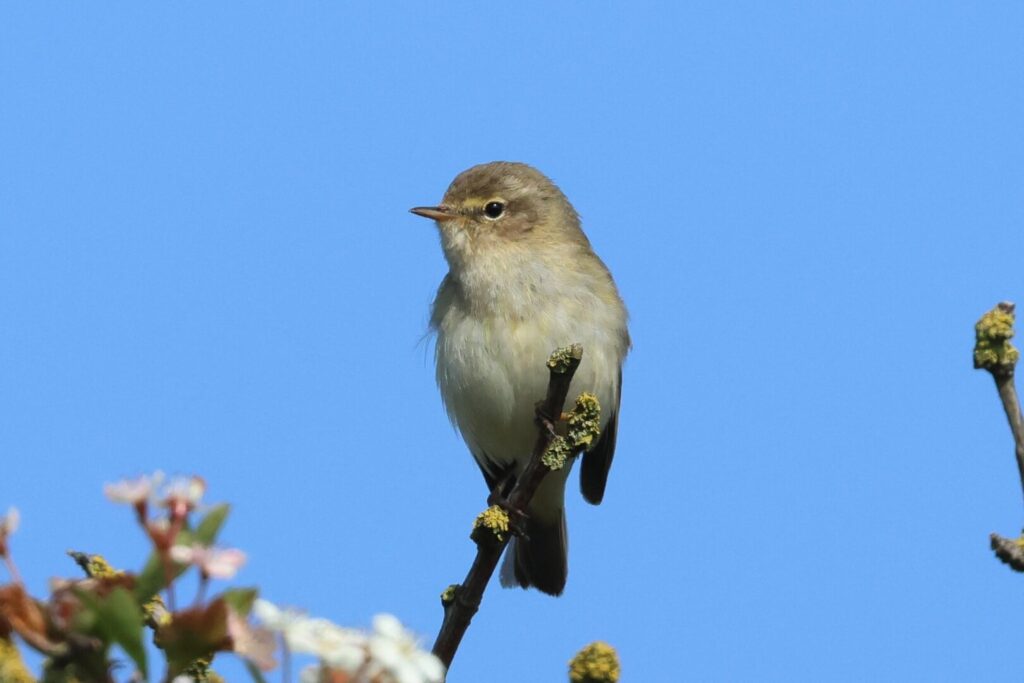
From time to time, we could hear the unmistakable sound of a Bittern booming out in the reedbed. As we got closer it got clearer, but it remained tucked deep in the reeds.
There were a few Lapwings, Avocets and Redshanks on the pools around the grazing marshes, plus a couple of Common Pochard and a pair of Tufted Ducks. Lots of Greylags, a few Egyptian Geese and a single Brent Goose were out on the grass. A few Wall butterflies were basking by the path as we passed.
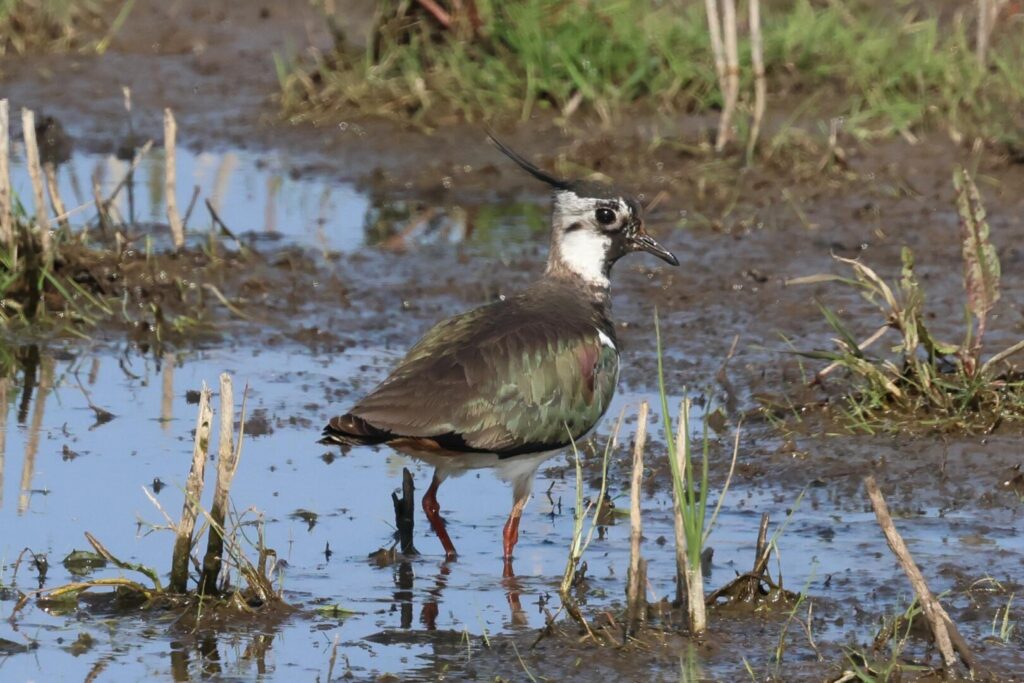
Up on the seawall, the tide was in. We could see some distant Grey Plovers roosting on the saltmarsh further up. We heard Bearded Tits pinging in the reeds, Sedge Warblers and Reed Warblers singing. A Cetti’s Warbler shouted and flew across in front of the gate we had just come through. Unusually, it landed in top of the brambles in full view, where it stayed for several minutes, singing from time to time. We could see three Great White Egrets lurking in the reeds.
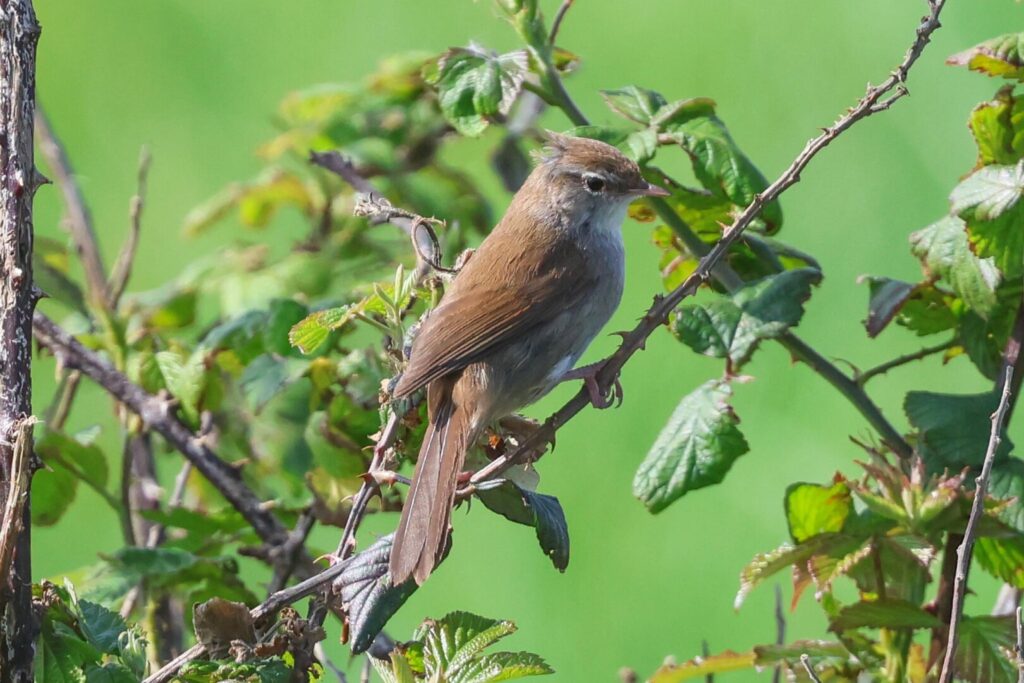
Beyond the reedbed, we scanned the grazing marshes again and found a single Pink-footed Goose out with the Greylags. We could see it had an obviously damaged wing, unable to make the journey back north to Iceland for the summer. A couple of dogs off the lead out on the dunes out at Gun Hill ran out onto the saltmarsh to flush all the Brent Geese which flew round and landed again in the middle. We had a better view of the Grey Plovers from here and a single Curlew which landed just behind.
We heard a Cuckoo calling and looked out across the marshes to the east to see two flying across in the distance, one following the other. They disappeared into the dunes out towards Gun Hill. As we walked on, they came back west out of the dunes and across the saltmarsh, much closer to us now, and disappeared back off the way they had come earlier.
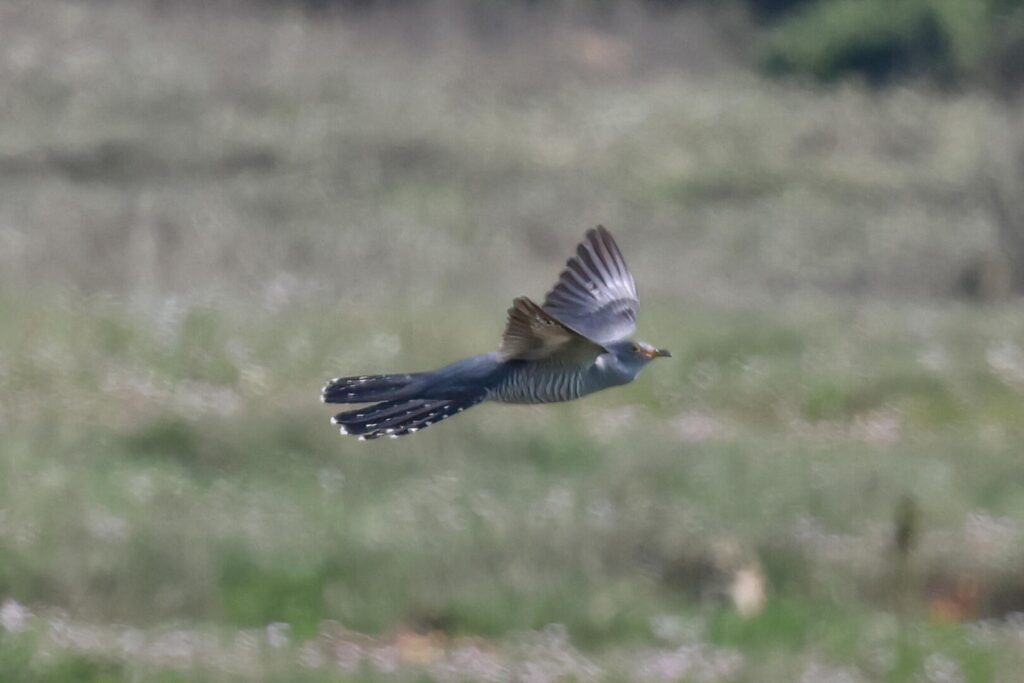
The flooded grassland before the dunes has been good for waders recently, so we stopped to scan. We were looking into the sun and the wind had picked up and now the mist started to come back in over the dunes in wisps. At first, all we could see were the usual Redshanks and Lapwings but then we noticed a smaller wader towards the back. It was hard to see well at first but it looked like a Curlew Sandpiper. We were able to get a slightly better view from up at the boardwalk bushes looking back and confirm our suspicions. A nice bird to find here and a scarce passage migrant in the spring, on its way up to Siberia to breed.
There did not appear to be any migrants in the bushes so we set off through the dunes towards the pines. There were several pairs of Stonechats, lots of Linnets and Meadow Pipits and we flushed a Sparrowhawk out from where it was sheltering in one dip in the dunes. By the time we got to the pines we had still not found any obvious migrants and we met another local who had walked in from the Holkham end and had a similar story to tell.
There were a few more invertebrates out in the dunes – several female Early Colletes bees around their burrows, a Hairy Sand Wasp, a Small Copper and several more Wall butterflies. We stopped at the end of the pines to listen to a mixed singing Willow Warbler which has taken up residence here – starting its song with a burst of Chiffchaff before reverting to more traditional Willow Warbler song.
We started to walk back. The person we had seen earlier had flushed a Wheatear in the dunes but it had disappeared over one of the ridges and there was no sign of it when we passed. The Curlew Sandpiper was still on the flooded grazing meadow and was a slightly better view now with the mist having lifted a little. As we walked back along the seawall, a Spoonbill flew over before heading out over the harbour.
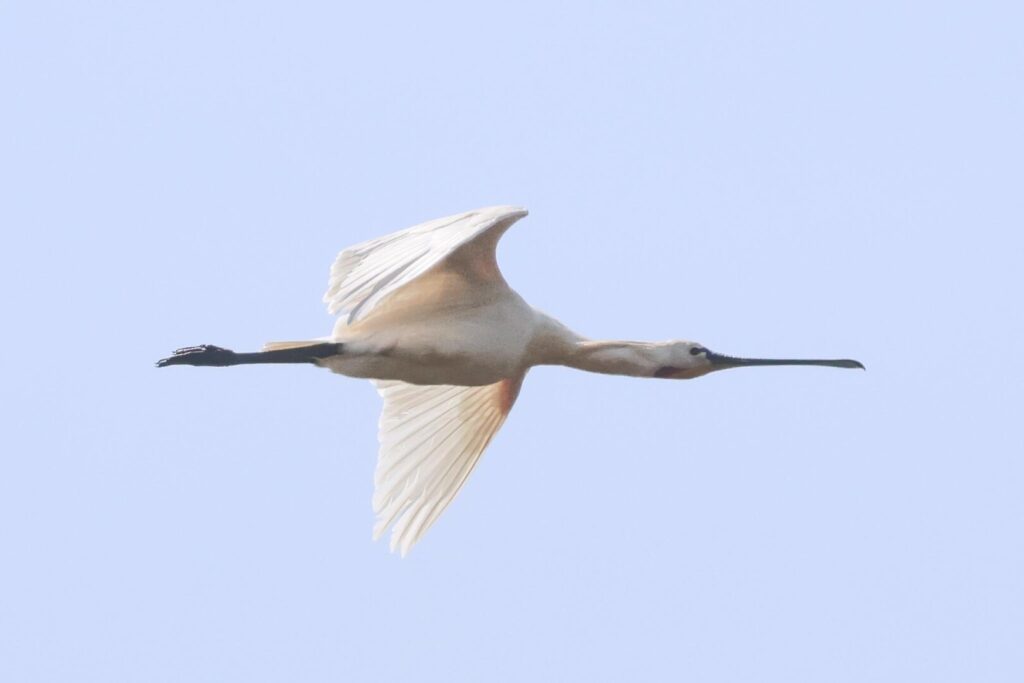
There was an obvious arrival of Black Terns happening today, so far all further south in Norfolk. We could see quite a few Black-headed Gulls hawking for insects over the reedbed pool from the dunes, so when we got in range we had a hopeful scan. There was a Black Tern in with them! We had a quick look from where we were, then hurried back along the seawall to the pool for a closer view. We stood and watched as it flew back and forth over the water, occasionally dipping down to the surface or flying up higher to catch insects. A full summer adult, with black head and body. Very smart!
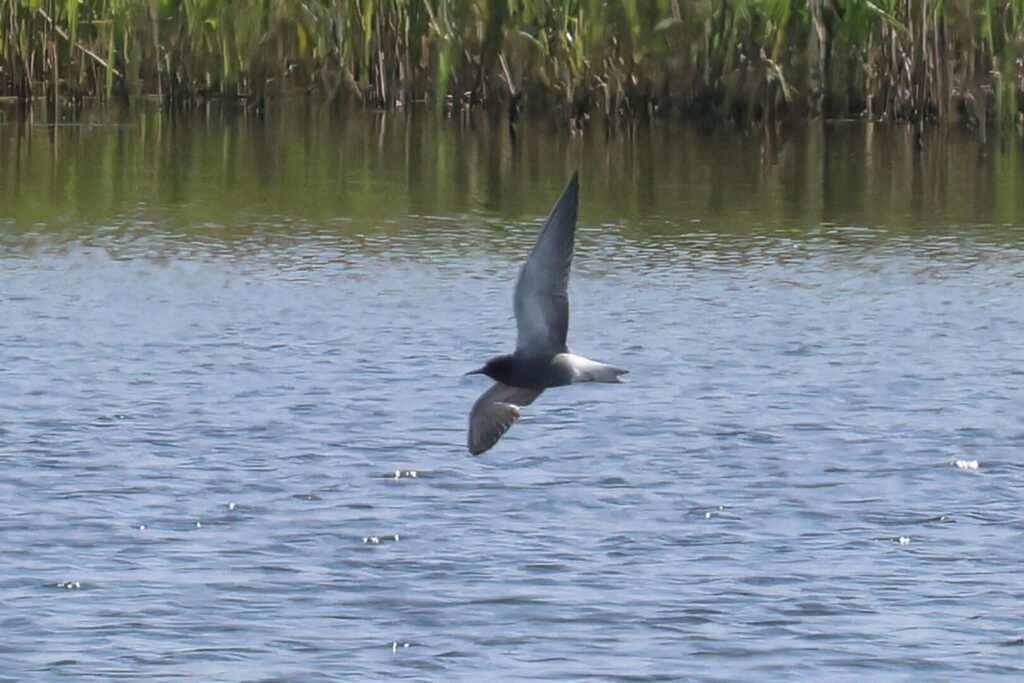
It was time for lunch, so we eventually had to tear ourselves away. Holkham was apparently very busy, with a charity walk on today, so we decided to head back west to Titchwell again for a late lunch. A Lesser Whitethroat was rattling away in the overflow car park. We had not had time to look at Thornham Harbour yesterday, so we decided to head round there next. The mist was still hanging over the beach but although it was sunny here it was clearly windy on the seawall too. We could see walkers coming down with their padded coats on, so we added an extra layer.
Walking up along the bank, the pools looked rather quiet. We continued on round the corner and scanned the flashes. There seemed to have been a few passage waders dropping in along the coast this afternoon and this is often a good place for them. All we could see now though was the resident pair of Little Ringed Plovers, plus the resident Lapwings and Redshanks. There was no sign of the Garganey either, although it hasn’t been reported here for several days now.
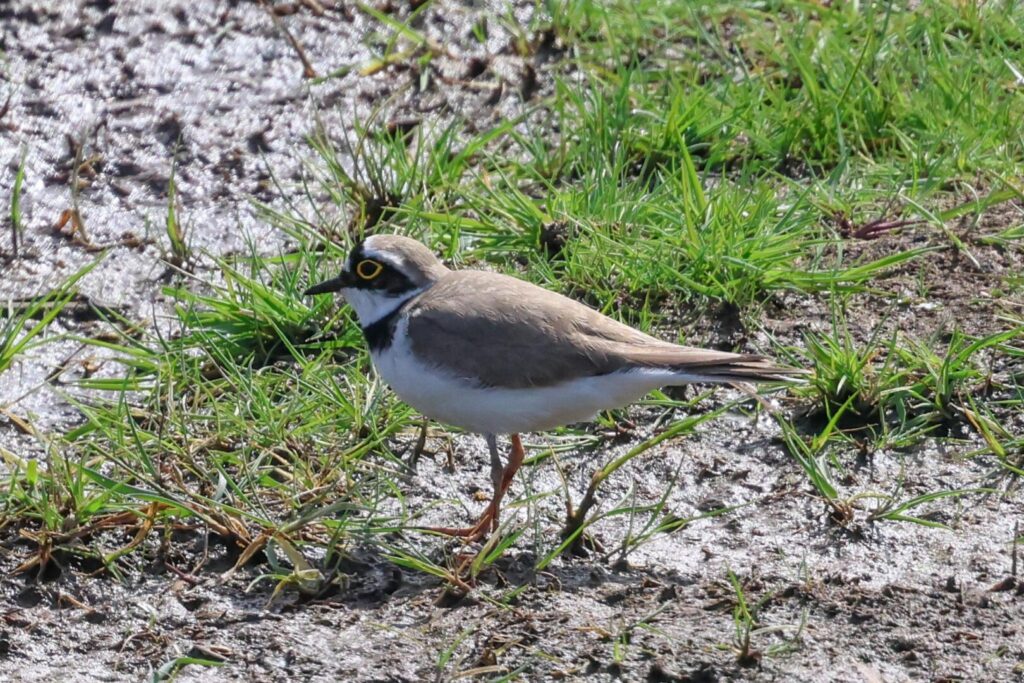
On the way back, we stopped to scan the harbour channel. There were several Grey Plovers, a couple now looking stunning in full breeding plumage, with black faces and bellies, and a pair of Ringed Plovers. On the saltmarsh beyond, we found several Whimbrel and a single Curlew. Even further back, we could see small groups of Dunlin and Turnstone running round on the bare mud.
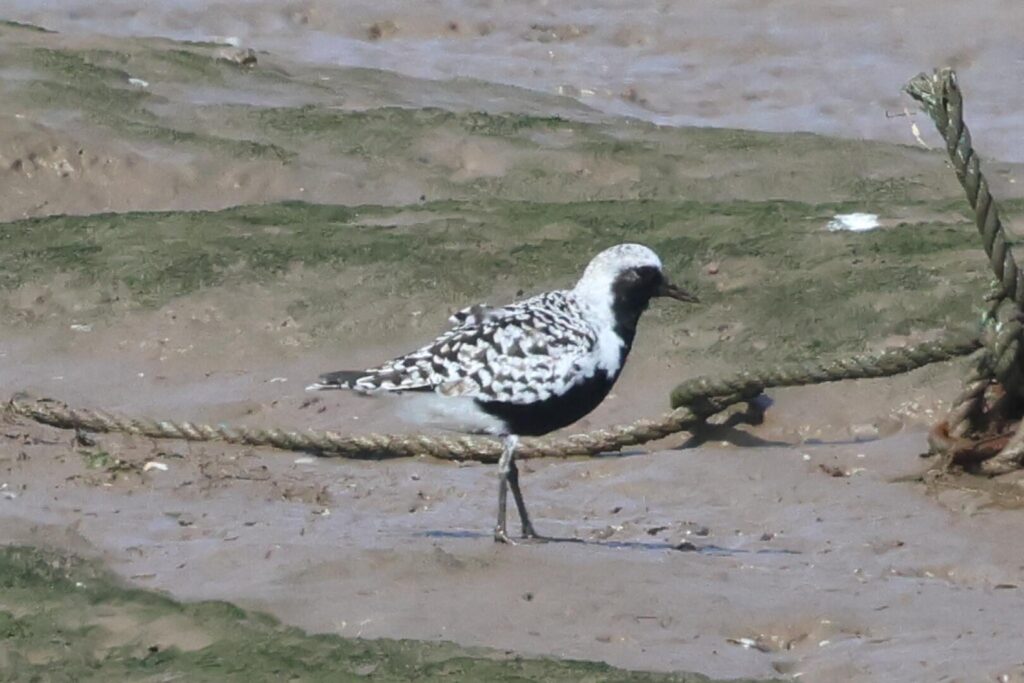
It was cold in the wind, so we headed back to the minibus. As we drove back past Holkham, a quick look from the layby on the main road added a single Barnacle Goose, one from the feral population which breeds in the park.
There had apparently been a couple of Wood Sandpipers at Stiffkey on the flood this morning, so we went to have a look there next, thinking it would be sheltered. There was no sign of them, but we did find a Green Sandpiper now, along with one of the Greenshanks we had seen on Thursday. A larger group of Black-tailed Godwits were further back. Another Lesser Whitethroat was feeding in the trees out of the wind.
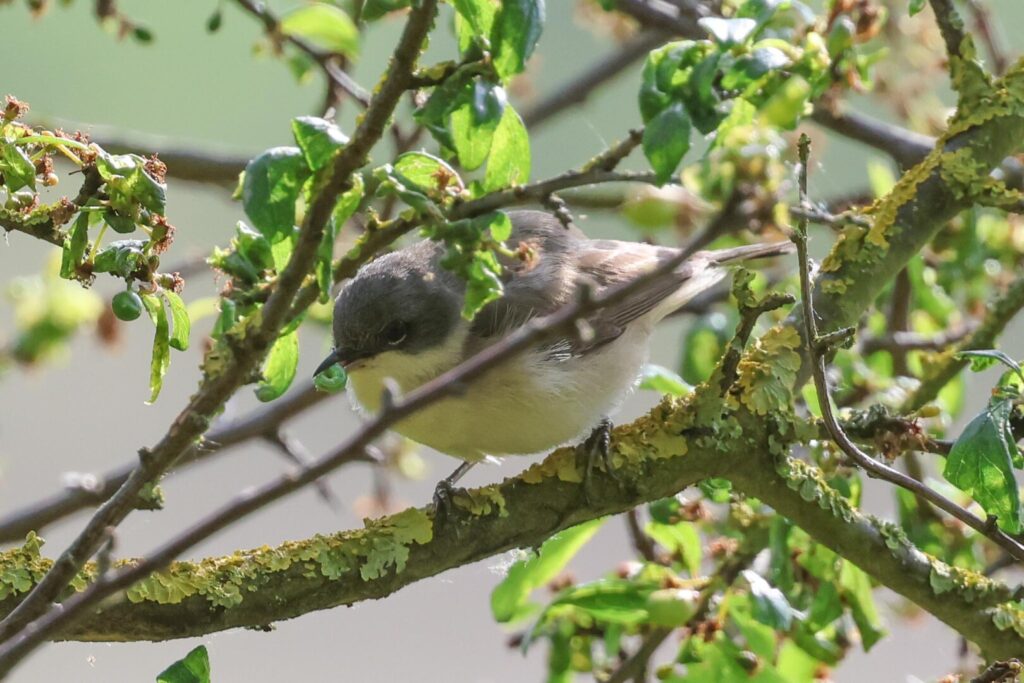
We just had time now for a quick look at the Fen. There were several Marsh Harriers up over the fields and two more Greenshanks on the flood from the permissive path. From up on the seawall, the Fen was rather quiet. A single Common Sandpiper was feeding along the back edge. A pair of Little Ringed Plovers were mating on one of the islands. An Oystercatcher was perched on the post across the channel from the steps and several Brent Geese were bathing in the water further up. The mist was hanging over the harbour, so it was hard to see much further back.
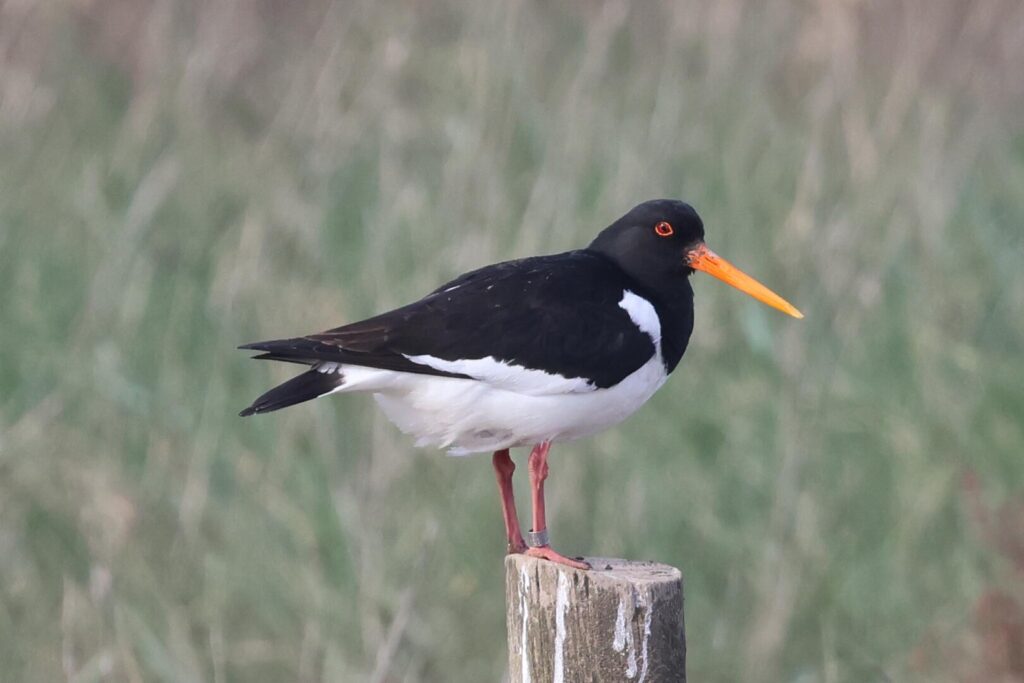
Unfortunately we were out of time and had to head back. We still had another day, our last, tomorrow. So let’s see what that brings.
